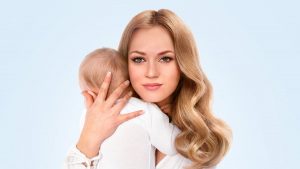
Earlier this month, Dove launched their new baby range with another of their fantastic adverts challenging stereotypes and questioning is there a “perfect mum”. As a mum myself I can relate to the many hilarious bloggers1 who are refreshingly honest about the unbrushed hair, lack of make-up, generally being covered in whatever substances your new tiny human decides to produce, and all other parenting frustrations. I’m really pleased that there are lots of women2 out there challenging the myths presented in the media – we don’t all have a team to make us beautiful, nor someone photo-shopping the results to perfection, and the pressure can be immense. This is where Dove’s campaign is fantastic. Rather than just creating a photoshoot with a model and doctoring the results, the image is actually completely artificial, having been generated by AI.
The technology here has been around for a while and makes use of adversarial networks to get a photorealistic result. I’ve blogged about this type of image creation before3. One AI network is focussed on producing an artificial image based on examples that the team took from magazines and advertising campaigns, and the second is trained to distinguish artificial images from real images. Both networks improve together and you end up with realistic images that fool humans. What is really great about this advert is that they have created a level of detail that is sufficient for a billboard poster rather than a small 64px image for publication only in an arxiv paper. This is where the innovation is really interesting to me.
The training data is reported to be only 1800 (albeit high quality) images, and from this, they have a megapixel image. The most recent similar papers on arxiv are at the 256 x 256 pixel generating images from text descriptions or classing 128×128 images as high resolution for face generation. This network was created for a single purpose, the “perfect mum” but it does show that high quality images can be produced artificially when you have a specific goal.
I find this really exciting and slightly disturbing at the same time, as I’ve written before, if we can’t trust our own eyes then are we entering an new era of if you weren’t there it didn’t happen and an inability to trust anything we see? Although with photoshop and special effects, we’ve been easily fooled before, it’s just now it will take less effort and therefore it’s going to be used far more frequently…
- E.g. Just a Normal Mummy and Emily Tea Lady ↩
- Shout out to all you dads as well – I know there’s just as much pressure for you to be perfect too, but since Dove was focussing on an artificial mum, I’m going to stick with discussing that for this post. ↩
- Nearly 2 years ago in fact, so the technology isn’t new. ↩